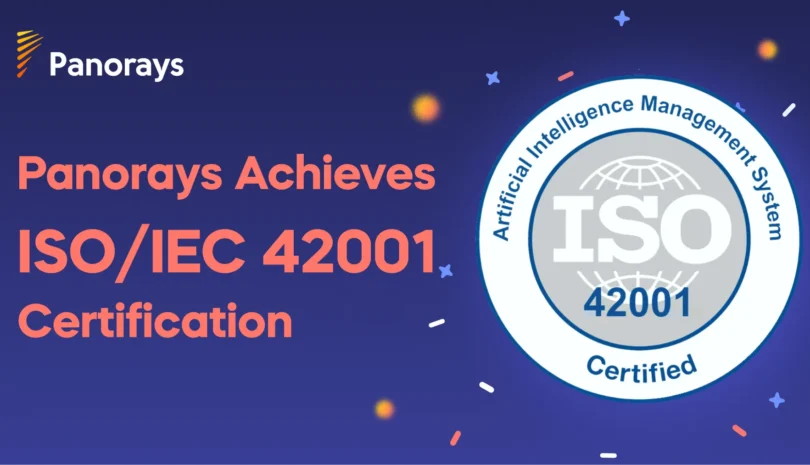External relationships power modern business. They also extend your attack surface and compliance obligations. As boards, customers, and regulators turn up the heat, you’ve probably heard the same question come up again and again: what’s the real difference between third-party risk management and vendor risk management? And where does each one fit into your day-to-day work?
Look, these two terms get tossed around like they mean the same thing. They don’t. And that confusion can leave gaps in your program. A strong approach protects more than just your suppliers. It covers every outside relationship that touches your data, systems, or operations.
This guide will clear up the definitions, show you where each approach fits, and give you practical steps to bring them together into one strategy your team can actually run.
Definitions and Scope Between TPRM and VRM
Third-Party Risk Management (TPRM) is the umbrella. It covers all external entities that can affect your confidentiality, integrity, availability, safety, or compliance. That means vendors, sure. But it also means the full range of outside relationships that shape your business – from cloud platforms and consultants to franchisees and subcontractors. If a relationship can influence your business outcomes, it belongs in your TPRM program.
TPRM looks at the full picture. It follows each relationship from the moment you consider it through every stage of its lifecycle, right up to the day you part ways. It also accounts for fourth parties (your third parties’ third parties) when they pose material risk. Ownership is typically shared across teams throughout your organization – from security and legal to operations and the business itself.
Vendor Risk Management (VRM) is a focused subset of TPRM. It deals specifically with vendors that sell you products or deliver services under contract. VRM activities usually center on procurement workflows and IT security controls. The lens is narrower by design. VRM optimizes the purchase-to-pay journey and makes sure suppliers meet your requirements before and after onboarding.
Key Differences Between TPRM and VRM
Think of VRM as one lane on a larger TPRM highway. The comparison below breaks down the key differences.
At-a-glance differences:
- Scope: TPRM covers all external parties. VRM focuses on contracted suppliers of goods and services.
- Ownership: TPRM spans the entire organization across different functions. VRM typically anchors to procurement with strong input from security.
- Use cases: TPRM addresses strategic partnerships, supply chain resilience, and non-vendor exposures. VRM addresses supplier due diligence, onboarding, and performance.
- Data and access: TPRM includes entities with indirect impact or shared processes. VRM centers on parties with direct access, integrations, or hosted data.
- Metrics: TPRM emphasizes enterprise risk posture across categories. VRM emphasizes vendor-specific control effectiveness and contract adherence.
- Depth: TPRM tracks fourth-party dependencies when they’re material. VRM may reference them through supplier disclosures.
Why the Distinction Between TPRM and VRM Matters
When you blur these terms, you hide risk. That contractor with privileged access to your network? The affiliate who’s sharing customer data? They might not show up on your vendor list, but they’re absolutely creating exposure. TPRM’s broader lens makes sure you catch these relationships, assess them properly, and keep them monitored.
The distinction also clears up who owns what. VRM tasks naturally fit into procurement workflows – they’re already set up for that. TPRM, on the other hand, sets your enterprise-wide policy and risk thresholds for all third-party relationships, then hands off the actual work to the right teams. This clean separation makes reporting to leadership easier and helps you meet regulatory expectations for complete oversight.
And let’s talk about money. When budgets are tight (and when aren’t they?), you need to know where to focus. A clear model tells you which high-risk relationships – vendor or not – deserve your attention and resources.
When to Use TPRM vs. VRM
Both approaches have their place. Your job is picking the right one for each situation without making life harder for your stakeholders.
Here’s your quick decision guide:
- Use TPRM when you’re looking at enterprise exposure across all third parties – partners, affiliates, logistics providers, consultants, the whole ecosystem. This is your lens for supply chain resilience, strategic deals, and organization-wide compliance.
- Use VRM when you’re onboarding a new supplier, renewing a contract, negotiating security clauses, or checking controls for a specific product or service.
We recommend building one unified intake process. Every external relationship comes through the same front door, gets routed based on relationship type and inherent risk, then receives the appropriate level of VRM or TPRM assessment. This approach keeps things predictable for everyone while maintaining the rigor you need.
How to Align Both TPRM and VRM in a Unified Risk Strategy
Bringing TPRM and VRM together starts with one governance model and a common language. Begin with your policy and scope. Define the boundaries – what counts as a third party, what falls outside those lines, and who gets to approve exceptions when they inevitably come up. Then map out clear responsibilities so nothing gets stuck in limbo while teams figure out who’s supposed to handle it.
Next, build risk tiers that work for both vendors and non-vendor third parties. Your tiering should reflect what actually matters most to your organization’s security and operations. When you use a consistent tiering model, you avoid wasting time on low-risk relationships while making sure you don’t miss critical partners.
The right platform makes all of this manageable at scale. Look for tools that bring together your intake process with everything that follows – questionnaires that adapt to each relationship, testing when you need it, continuous monitoring that catches changes, and automated nudges that keep remediation moving forward. The same system should handle VRM tasks for your suppliers while tracking broader TPRM exposures for partners and affiliates.
Track these shared metrics so you’re comparing apples to apples:
- Inherent risk – your exposure level before any controls are in place
- Residual risk – what’s left after controls, remediation, and contract commitments
- Risk ratings – your guide for consistent decisions and knowing when to escalate
- Time to assess and time to remediate – your operational health indicators
Finally, close the loop. Match your contract clauses to risk tiers, monitor for changes that increase exposure, and have a solid offboarding plan to recover data and revoke access. A quarterly review that rolls up both VRM and TPRM metrics for leadership helps you spot trends before they become problems.
Final Thoughts: Bridging the Gap Between VRM and TPRM
VRM is essential, but it’s only one piece of your third-party risk puzzle. When you treat every external relationship through a unified approach, you’ll cut down on blind spots and make faster, smarter decisions. Plus, you’ll build real trust with leadership and customers because your strategy isn’t limited to just your supplier list.
Teams that get aligned on definitions, risk tiers, and shared metrics? They see clearer, act faster, and defend better. That kind of unity transforms what used to be a chaotic mess of processes into a program that actually scales as your ecosystem grows.
Panorays helps you pull all these pieces together. Our AI-powered platform tailors third-party cybersecurity management to each relationship – whether it’s a vendor or not. You’ll get adaptive assessments and actionable remediations that keep you ahead of emerging threats across your entire external network. That’s how we reduce supply chain cyber risk so companies can do business together quickly and securely.
Want to see this in action? Book a personalized demo with Panorays.
Third-Party Risk Management vs. Vendor Risk Management FAQs
-
You’ve got the whole range of business relationships that don’t fit the traditional supplier mold – strategic partners who share your brand, independent contractors with system access, even the logistics companies and advisors who touch your operations but never appear in procurement systems.
-
If you’re building a program from scratch, start with VRM. Supplier onboarding gives you a clear trigger to act on. But define your TPRM scope and tiering at the same time. That way, when you’re ready to expand beyond vendors, you won’t need to rebuild everything.
-
Most regulations care about outcomes – whether you can spot, assess, monitor, and govern the external relationships that matter. That means your oversight needs to cover any third party that can impact your security, privacy, resilience, or compliance posture. Not just vendors.
-
Absolutely. A single system can handle all your third parties, route them by relationship type and risk tier, then manage everything from questionnaires through to remediation tracking and executive reporting. This cuts down on tool sprawl and keeps your policies consistent across your entire ecosystem.



